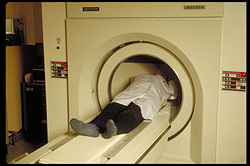New paradigms for virtual musculo-skeletal imaging
The project has developed a software framework for the rapid development of computer-aided medical applications. It enables the visualisation and manipulation of anatomical objects and images in a way that is already familiar to biomedical professionals from previous experience with other applications. The Multimod Application Framework developed by the project team provides a software library with all the services and elements needed to produce complete medical imaging applications. The framework consists of three modules, including a Multimod Storage Creator for storing the medical data. The Multimod Foundation Layer contains software elements for visualising and manipulating this data, while the Low Abstraction Layer can combine these to develop applications. The Multimod Storage Creator is a software application that reads biomedical data in its native format and manages the storage space. The application stores the data, along with text needed to make use of the data, in a hierarchical, expandable storage space, and in a format that can be imported easily by medical applications. The Multimod Foundation Layer is a portable software library that provides all the software modules, or classes, that are needed for accessing and managing the data in the storage space. It includes a 3D computer graphics and visualisation library, called the Visualisation Toolkit library (VTK), new high performance visualisation classes, and libraries for detecting collisions and managing the storage format. The VTK contains a new data format called Virtual Medical Entity (VME), which collects data objects and organises them following a pre-defined structure. The position and orientation of each object is defined with respect to a global reference system that can handle cases where the shape of an object changes over time. The project team are interested in collaboration with large companies, healthcare professionals interested in producing specialised applications or bioengineers wishing to do research on computer aided medicine. Low-priced academic licenses for the software may also be considered.







